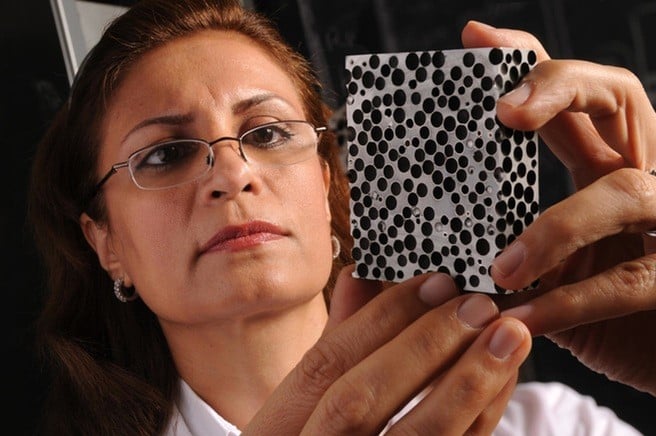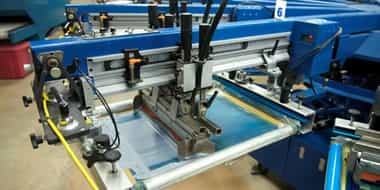Composite metal foams (CMFs) keep rolling out the hits, in terms of their ever-widening use.
As detailed in one of our May
blogs, CMFs offer unprecedented protection from bullets, dissolving them into dust upon impact.
Add another hit to the list: novel light-weight CMFs provide better insulation against high heat than the conventional base metals and alloys that of which they're made, like steel, reports a
study from North Carolina State University.
The finding means the CMF is especially promising for use in storing and transporting nuclear material, hazardous materials, explosives and other heat-sensitive materials, as well as for space exploration.
“The presence of air pockets inside CMF make it so effective at blocking heat, mainly because heat travels more slowly through air than through metal,” says Afsaneh Rabiei, a professor of mechanical and aerospace engineering at NC State and corresponding author of a paper on the work.
The composite metal foam consists of metallic hollow spheres made of materials such as carbon steel, stainless steel or titanium embedded in a metallic matrix made of steel, aluminum or metallic alloys.
METAL MATRIX COMPOSITES OFFER EXCEPTIONAL PHYSICAL PROPERTIES
The metal matrix composite (MMC) business is an emerging technology offering many advantages to engineers and designers in a number of key industries including automobiles, aerospace, nuclear energy and electronic components among others, reports Andrew McWilliams in
Metal Matrix Composites: The Global Market
"There's high interest in MMCs because has been extensive as these advanced materials combine desirable physical properties of both metals and ceramics, and often have greater stiffness, better wear resistance, lower density, and other advantages when compared with the standard materials," McWilliams says.
Rabiei says the research team developed two technologies for manufacturing CMFs.
“One is based on casting a low melting point matrix material, such as aluminum, around hollow spheres made of a material with a higher melting point, like steel," Rabiei explains. "This creates aluminum-steel CMFs, for example. The other technique is based on sintering, or baking, the matrix powder around prefabricated hollow spheres. This creates CMFs such as steel-steel, which consist of steel hollow spheres in a steel matrix.”
In one test, researchers exposed samples of 2.5 inch by 2.5 inch steel-steel CMF that were 0.75 inches thick to a fire with an average flame temperature of 800 degrees Celsius for a period of 30 minutes on one side, and monitored the material to see how long it would take for the heat to reach the opposite side of the sample.
For a piece of bulk stainless steel with the same dimensions as the CMF sample, four minutes elapsed before it reached 800 degrees Celsius through the entire thickness of the sample. But it took eight minutes for the steel-steel CMF to reach the same temperature.
“We already knew the CMFs are light-weight materials with outstanding high-velocity impact resistance, and effective radiation shielding, now we know that it can withstand high heat,” Rabiei says. “This difference in thermal conductivity means that the use of composite metal foams could help avoid circumstances where accidents can lead to explosions.”
The researchers also found that the composite metal foam made entirely of stainless steel expands 80% less than bulk stainless steel at 200 degrees Celsius, a differential that increases at higher temperatures. Also, composite metal foam offer another advantage in that it expands at a fairly constant rate when exposed to high heat, whereas conventional bulk metals and alloys like stainless steel expand more rapidly as temperature increases.
“Our findings suggest that CMF can offer extremely good thermal insulation, superior thermal stability, and excellent flame retardant performances as compared to commercially available materials such as stainless steel,” Rabiei says.




